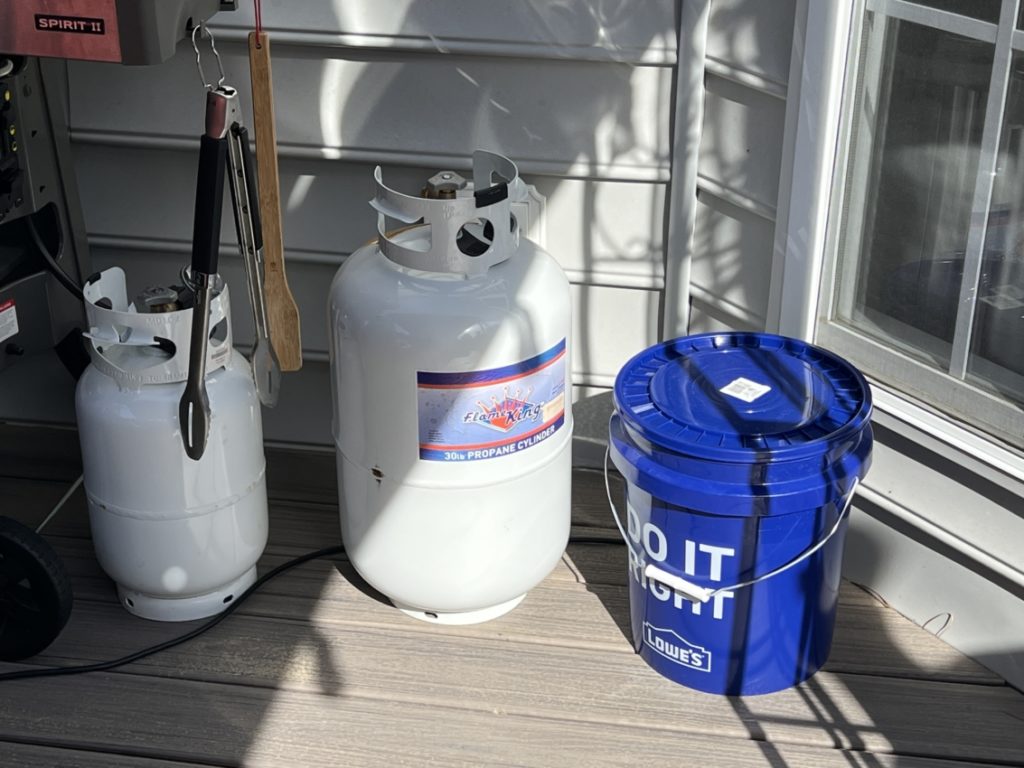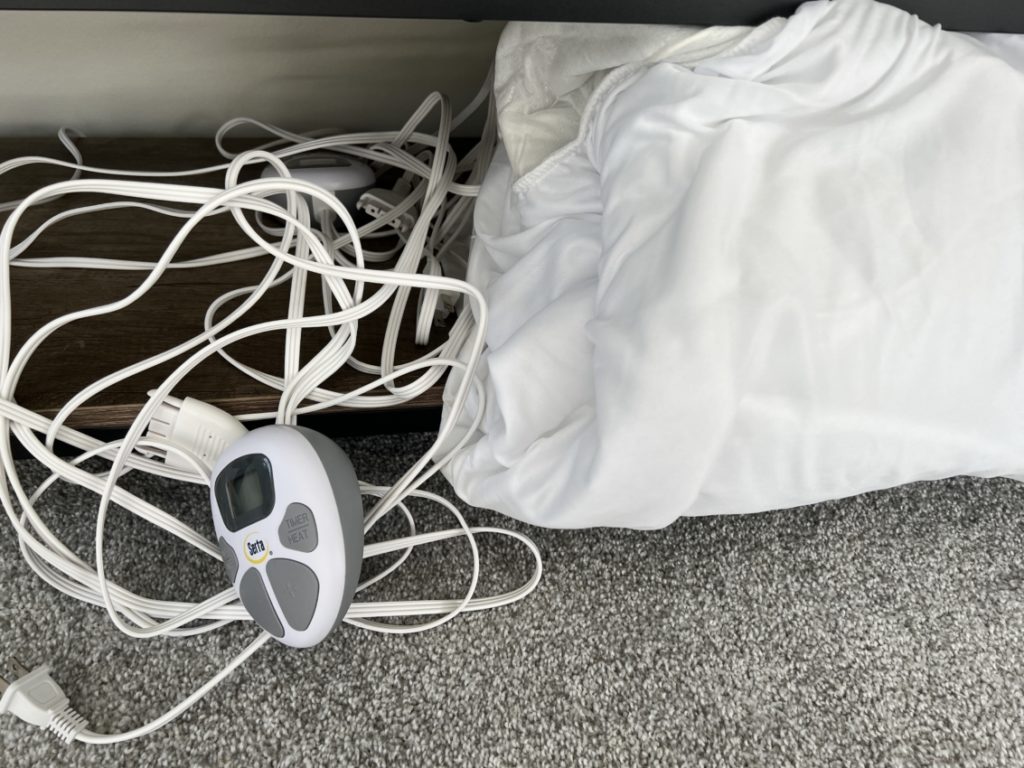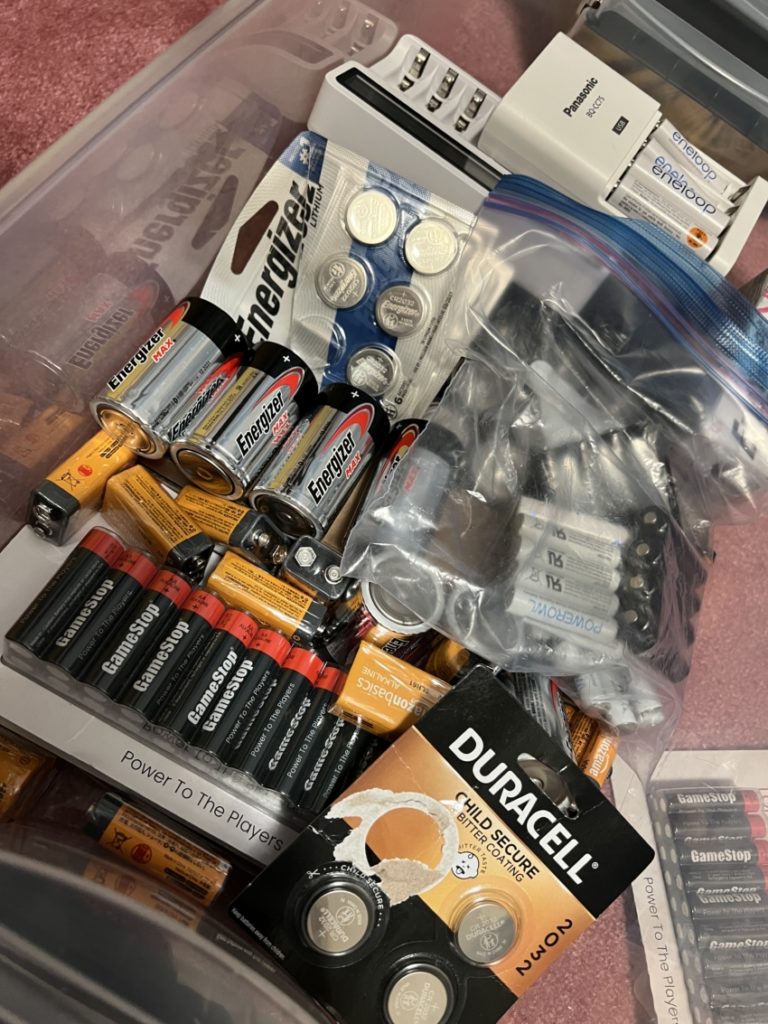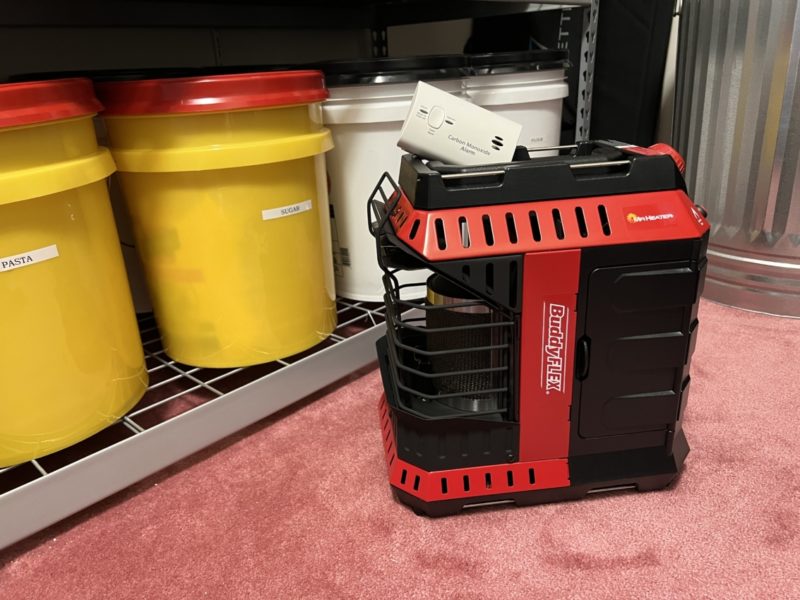If you’ve ever lost power in the winter, you know how tough it can be to stay warm. Staying warm is the most important thing you can do for yourself in case of a power outage, as it will keep you from getting sick or injured due to extremely cold temperatures. It will also keep you, your family, and your pets comfortable while you wait for the power to turn back on.
This guide has been put together to help you learn some tips and tricks on how to stay warm during a power outage even on those chilly nights. To learn more about some of the best ways to stay warm without power, read on!
Reasons You Should Stay Warm (Besides the Obvious)
There are lots of reasons why you should stay warm during a power outage, and not just because it feels nicer. For one, staying warm during cold weather keeps you safe from frostbite and hypothermia, which can be deadly if not treated quickly.
Keeping warm can also help reduce anxiety during a power outage, as your health and comfort are one less thing to worry about during an already-stressful situation. Keeping calm during emergencies is incredibly important, as you’ll have a harder time thinking through strategies to stay safe if you’re panicking.
You can also protect your home by keeping the inside warm, as this can prevent your pipes from freezing and bursting. Burst pipes can not only cause major damage to your home, but they are also incredibly expensive to fix. Water damage is the last thing you want to deal with while you’re in the middle of a frigid snowstorm!
Remember that staying warm isn’t always just about you. If you have children, you need to figure out ways to keep them warm and comfortable as well. This also goes for those with pets – your pets are just as susceptible to cold-induced illnesses as you are. Keeping your home warm as much as possible during an outage protects you and your entire family.
1. Keep the Power and Heat On (If You Can)
Though it sounds obvious, the best way to stay warm during a power outage is by keeping your power on. You can use a generator to keep the power in your home on even when your regular power is out due to a storm or other electrical issue. Generators normally run on mechanical energy from an engine to produce electrical energy, which can then turn your heat back on.
Your generator will likely be fueled with gasoline, natural gas, or propane for those tough emergency situations. Talk to a generator professional if you plan to install one in your home. Every home is unique, and not all generators will be powerful enough to generate energy for your entire house.
Having an expert come look at your home is the best way to ensure that you purchase the right type of generator for your needs. Though generators are expensive, they’re the most effective way to keep you and your home safe and warm during winter emergencies.

You can also invest in a portable heater that doesn’t require electricity, such as those used for camping. Some portable heaters run on batteries, some need to be charged in advance using electricity, some need propane, while others run on natural sources of power such as cranks or solar panels.
Portable heaters are also cheaper than an entire generator, so you can save some money while still remaining relatively warm during an outage.
2. Prevent Drafts in Windows and Doors
Sometimes, the easiest way to stay warm during the outage is by preventing the cold from creeping in, rather than generating new heat. You should check all of your windows and doors for any gaps or cracks that can result in drafts that quickly result in your home losing all of its heat during a power outage.
Some ways that you can prevent drafts in windows and doors are:
- Sealing with caulk
- Adding weather stripping
- Using window insulation film
- Laying down draft stoppers
- Installing door sweeps
Some of these methods, such as sealing with caulk or adding weather stripping, are best done in preparation for a snowstorm or power outage. However, you can still prevent drafts with these methods during a power outage if you already have the supplies on hand.
For old houses, using more than one method listed above may be more effective at fully stopping a freezing cold draft from a thin door.
If your power is already out and you can’t access any of the items above, you can also create homemade draft stoppers by rolling up thick towels and shoving them under doors and around window frames and doorframes.
‘Don’t have enough towels? Use any other spare cloth you have around your home, such as blankets, t-shirts, or even stuffed animals.’Don’t have enough towels? Use any other spare cloth you have around your home, such as blankets, t-shirts, or even stuffed animals.
3. Break Open the Fireplace
If you’ve got a fireplace, now is the time to use it!
Hopefully, you have some firewood on hand that you can burn to keep nice and toasty for at least a few hours. If not, consider any other flammable materials you may have on hand, such as paper or cardboard boxes. Though these won’t burn as long, they’re still a good option to generate a bit of heat during a true emergency.
Don’t forget that you’ll have to light the fireplace somehow. Make sure you have either a lighter or a box of matches to get your fire started. If you’re really in a pinch, high amounts of friction between twigs or other hard, dry items can sometimes produce enough of a spark to light a fire.
Always make sure you light any fire in your fireplace safely. Ideally, you have some sort of experience using your fireplace already, so you know what to do. If you don’t, hopefully, someone else in your home does.
If you don’t, remember to use a fire grate to keep any logs or burning material inside the fireplace so it doesn’t accidentally roll out and light your home on fire. You should also have some water and towels nearby in case your fire gets out of control, so you have a quick way to put it out.

4. Insulate Hard Surfaces
Hard surfaces in your home will get chilly faster than soft surfaces. After all, would you rather lay on a cold hardwood floor or on a warm mattress in your bed?
If you have lots of blankets and towels in your home, you may want to lay these around your home to insulate your hard surfaces. This can make it more comfortable to walk around your home without exposing yourself to frigid surfaces. It can also keep the temperature in the room up as the heat will leave less quickly thanks to the insulation you’ve created.
Don’t stop at just your floor though! Windows are also a huge culprit for letting heat out and cold in. You should insulate your windows with either window cling or thick curtains to prevent any heat from escaping through them. Just like with your hardwood floors, this will keep the average temperature in the room higher over time.
Always make sure your home is still safe to walk through if you plan to insulate your hard surfaces. If your blankets are bunched up on the floor, you run the risk of tripping and hurting yourself during a weather emergency. Always make sure your blankets or towels are laid flat and that you walk carefully so you don’t slip as you navigate your home.
5. Change Your Clothing
You’ll have a hard time staying warm if you’re sitting around in a tank top and shorts! If the power is out, go to your closet and find the warmest clothes you own. Think of clothing like:
- Sweaters/sweatshirts
- Fleece pants
- Wooly socks
- Gloves
- Hats
- Scarves
- Coats
Putting on more layers will naturally keep you warmer as the clothing will insulate your body heat. This can keep you from getting hypothermia if you can’t stop your home from getting cold.
Remember that if any of your clothing is wet, it will only make you colder. Always make sure any additional layers you put on are completely dry before putting them on.
You may even want to put on multiple layers of the same type of clothing or even wear shoes in the house to add extra layers of protection to your body. Keeping a few packs of air-activated hand warmers or insole foot warmers is also a good idea.
Don’t forget to top off your outfit with a thick, warm blanket. Any sort of blanket you use can only help to insulate your body heat and keep you warm as you wait for your power to return.
Investing in a few USB rechargeable neck heaters is also a good idea, especially in really cold winter conditions. Rather than heat up the entire living space or room, these heaters focus on just the individual, thus saving energy and being more efficient.

6. Eat Warm Foods
Even if you can’t heat your food up normally, that doesn’t mean you can’t have any warm food at all. If you’re used to having frequent power outages, consider purchasing some emergency food rations online or locally.
Some of these emergency food packs are able to heat up chemically, which can give you warm food to eat. You can also keep your hands warm by holding the heating pouch, as long as you’re careful to not burn your hands.
If you don’t have any emergency food rations, consider heating your food using another heating source, such as your fireplace or portable heater. You can leave your food near these sources to heat them up before eating them, which can keep you warm.
7. Keep Activities in One Room (Preferably, a South-Facing One)
Keeping your family in one place is the best way to keep yourselves warm during a power outage. With all of your kids and toddler activities in one room, all of your body heat will be kept in one room, which makes keeping the room warm more effective. You should ideally pick a smaller room in your home, so the heat stays in more effectively.
If possible, you should also consider a south-facing room. These rooms will be warmer because the sunlight will be directed at these rooms longer during the day in the winter. However, you should carefully consider which is more effective: insulating your windows with cling and drapes, or letting sunlight come through the window to warm the room.

8. Do Some Light Exercise
If none of the above works, consider doing some light exercise! Physical activity generates heat within the body and helps to keep you warm in cold weather. When you exercise, your muscles contract and relax, producing heat through metabolic processes. This helps to raise your core body temperature and keep you warm, even in cold conditions.
Additionally, physical activity can also increase blood flow, which can help distribute heat throughout your body. Just be sure to dress appropriately and stay hydrated while engaging in physical activity in cold weather.
You should also make sure you don’t exercise too hard, as this can result in profuse sweating. Once your sweat cools, you may find that you’re even colder than you were before! Light exercise should be just enough to warm up your body without having you sweat in your clothing.
If you do sweat while doing physical exercise, just make sure you dry off and put on dry clothing to keep your body temperature from dropping right afterward. You may even be able to warm up some rags or towels on a portable heater so you dry off with something cozy and warm before getting changed.
Conclusion
Staying warm during a power outage is not just for comfort but for safety as well. Keeping your power on, preventing drafts in windows and doors, breaking open the fireplace, insulating hard surfaces, changing your clothing, and eating warm foods are all ways to stay warm during a power outage.
In the case of a power outage, it is important to prepare yourself and your home in order to keep warm and safe. Taking these precautions can help reduce anxiety and prevent illnesses like frostbite and hypothermia while ensuring that your home is safe from damages caused by freezing pipes. As long as you follow these tips, you’ll stay nice and toasty until your beloved power comes back on.






Leave a reply